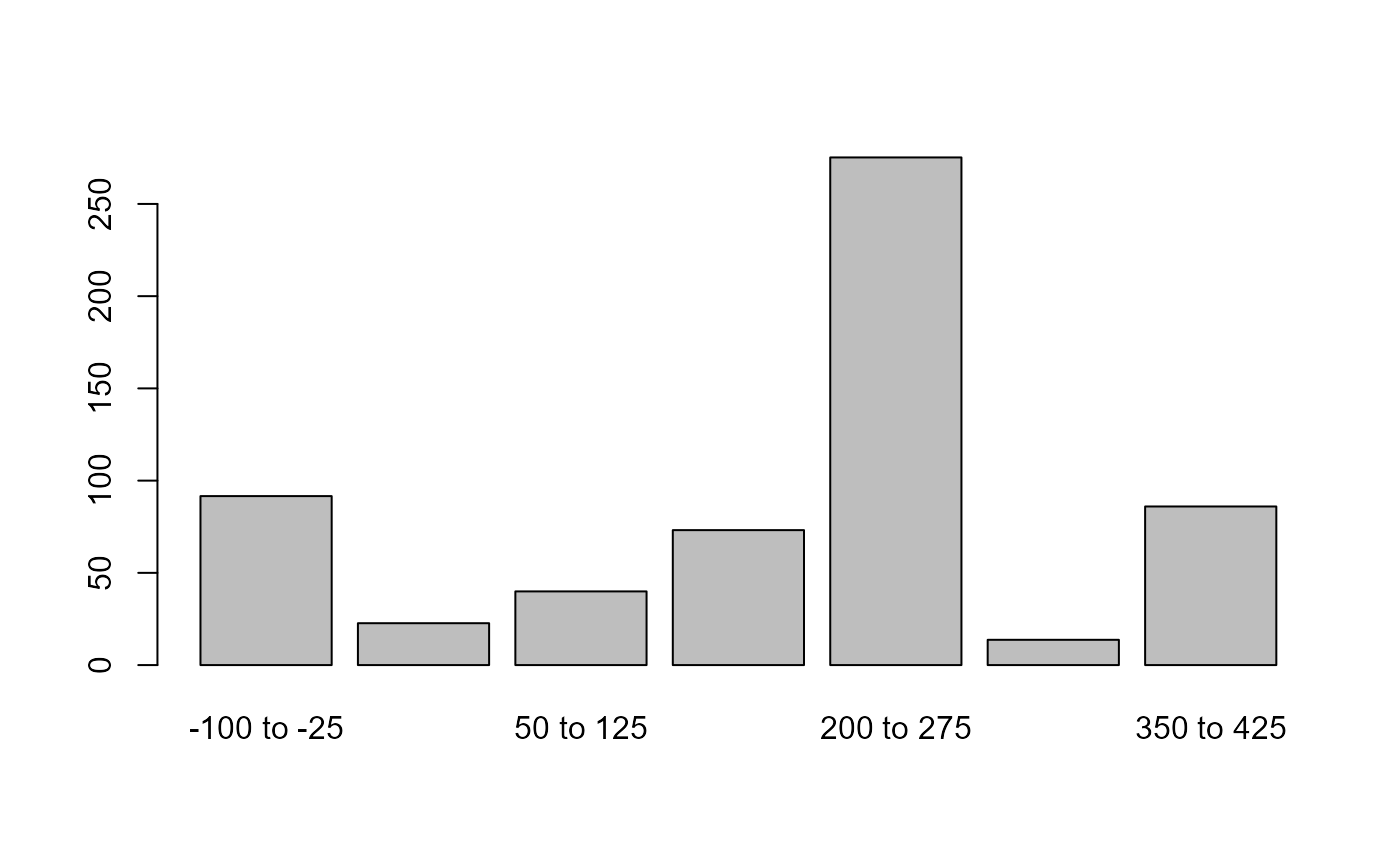Compute probabilities of existence
prex.RdA function to compute probabilities of existence of artefacts related events.
prex(x, type = c("aoristic", "mp", "other"), taq, tpq, vars,
bins = NULL, cp, weight = 1, DF, out, plot = FALSE, main = NULL,
ylim, keep, ...)Arguments
- x
list or data frame object of variables and observations.
- type
Type of date format to compute or plot:
aoristicaoristic summpmid points and rangeother- taq
timespan endpoint terminus ante quem (TAQ)
- tpq
timespan endpoint terminus post quem (TPQ)
- vars
boundaries of existence of
x(vector for timespan endpoints)- bins
length of the break (integer and optional)
- cp
Chronological phase:
"bin5"five-bins from the antiquity period"bin8"eight-bins from the antiquity periodlist with a customized chronological phase
- weight
value to observations (optional)
- DF
return also data frame with observations? (optional and logical)
- out
number of outliers to omit (integer or vector where first entry id for latest date)
- plot
plot the results?
- main
plot's main title (optional)
- ylim
limit in \(y\)-axis (optional, for plot)
- keep
for
mp, keep variables in output? (optional and logical)- ...
additional optional parameters
Details
Currently, the probability of existence of the observations is the aoristic sum computed across events for portions of time
delimited by a TAQ in taq and TPQ in tpq, which are endpoints from the stance of the timespan.
Alternatively, these two boundaries of existence of x are specified in vars.
In case the bins are set to NULL, then the time breaks take the chronological periods in cp, which by default
is "bin5" or five-periods for the EDH dataset.
Another built-in option is "bin8" for eight chronological periods, but option cp is open for other periodization models
as long as the categories of time blocks are components of a list object.
Value
A data frame with values according to either bins or cp.
If plot is specified, a bar plot with bars of outcomes by bins or cp.
References
Crema, E. ``Modelling temporal uncertainty in archaeological analysis,'' J Archaeol Method Theory, 19:440--461. (2012). (for aoristic sum)
Bevan, et al. ``Measuring chronological uncertainty in intensive survey finds: A case study from Antikythera, Greece,'' Archaeometry, 55, 2, 312--328. (2013). (default chronological periods)
Note
When aoristic is set to FALSE, then a simple matching of only TAQ and TPQ is computed from x.
See also
edhw, plot.dates, dts.
Examples
## Not run:
# first 100 entries in the EDH dataset
data("EDH")
#> Warning: data set ‘EDH’ not found
EDHdates <- edhw(vars=c("not_after", "not_before"), as="df", limit=100)
#> Warning: "x" is for dataset "EDH".
# compute aoristic sum with five-periods
prex(x=EDHdates, taq="not_before", tpq="not_after", cp="bin5")
#> Arch Class Hell Rom Byz
#> 0.0000 0.0000 398.1836 3913.6588 0.0000
# compute aoristic sum with 75 year span
prex(x=EDHdates, taq="not_before", tpq="not_after", bins=75, plot=TRUE)
 #> [1] 0.7
## End(Not run)
#> [1] 0.7
## End(Not run)